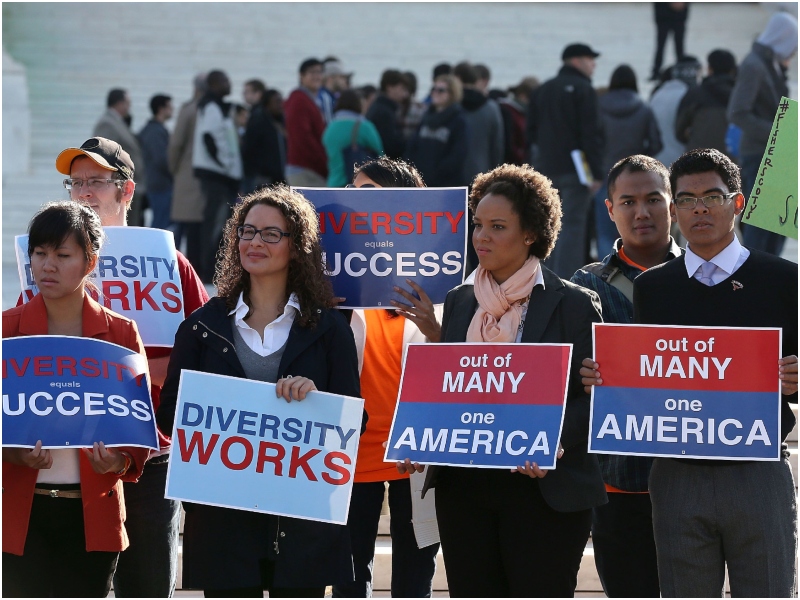In the wake of Justice John Harlan’s famous dissent in Plessy v Ferguson, wherein he coined the phrase “color blind,” the issue of affirmative action has been at the forefront of legal debates in the United States.
The concept of affirmative action, particularly in government programs and educational institutions, has prompted a series of landmark cases that have shaped the legal landscape surrounding racial classifications and equal protection under the law.
The pivotal case of Bakke v. Regents, University of California (1978) marked the Supreme Court’s initial examination of affirmative action in higher education. Allan Bakke, a white applicant, challenged the University of California-Davis Medical School’s admissions policy, alleging that he was unfairly denied admission in favor of less qualified minority applicants. While Bakke prevailed, the Court’s decision underscored the constitutionality of affirmative action, provided it aimed to foster diversity and was narrowly tailored. This precedent was reiterated in Grutter v Bollinger (2003), where the Court upheld the University of Michigan Law School’s affirmative action policy, emphasizing the compelling state interest in diversity and the necessity for individualized consideration.
However, subsequent cases such as Meredith v Jefferson County and Parents Involved v Seattle Schools (2007) showcased the Court’s evolving stance. Striking down programs that employed race as a factor in school assignments, the Court emphasized the need for narrowly tailored measures to achieve racial diversity, particularly in the context of public schooling.
In Fisher v University of Texas (2013), the Court further scrutinized affirmative action policies, demanding rigorous application of strict scrutiny and emphasizing the necessity of race-neutral alternatives. This decision, along with Schuette v Coalition to Defend Affirmative Action (2014), highlighted the latitude afforded to states in determining the permissibility of affirmative action, thereby reaffirming the principle of democratic decision-making.
Most recently, in Students for Fair Admissions v Harvard and University of North Carolina (2023), the Court adopted a stringent stance against affirmative action in collegiate admissions, asserting that race should play no role in individualized admissions decisions. This decision underscored a departure from prior precedents, signaling a heightened scrutiny of diversity initiatives predicated on racial classifications.
In sum, the evolution of affirmative action jurisprudence reflects a complex interplay between constitutional principles, societal imperatives, and judicial interpretation. While the Court has recognized the compelling interest in fostering diversity, it has increasingly demanded strict scrutiny and narrowly tailored measures to justify racial classifications, underscoring the delicate balance between equality and diversity in the American legal landscape.
Cases
Affirmative Action in the Schools
Bakke v. Regents, Univ. of California (1978)
Grutter v Bollinger (2003)
Parents Involved v Seattle School District (2007)
Fisher v University of Texas (2013)
Students for Fair Admissions v Harvard (2023)
Minority “Set Aside” Programs
Richmond v. J. R. Croson (1989)
Adarand Constructors v Pena (1995)
Link
Government Interests Asserted in Bakke
Questions
1. How should we evaluate discrimination between racial minorities? For example, what if an affirmative action program for school admissions were to extend preferences to blacks and Hispanics, but not Native Americans?
2. How should a court evaluate a claim of discrimination by someone complaining of exclusion from a protected class? For example, if a school admission program classified someone with two black grandparents as “black,” but someone with one black grandparent as “white,” could the student classified as white support a claim of unconstitutional discrimination? What standard of review should apply to such state line-drawing?
3. Which of the various state interests alleged by California in the Bakke case seem the most compelling to you: (1) remedying past societal discrimination, (2) increasing the number of minorities in the legal profession, (3) increasing legal services for underserved populations, or (4) increasing diversity in the classroom? Do you agree with Justice Powell’s analysis with respect to whether UC-Davis’s classification was a narrowly tailored means of serving the vaious interests alleged?
4. Is Justice Powell’s opinion in Bakke “the law”? Why or why not?
5. Should “benign” racial classifications be subject to strict scrutiny or, as the four dissenters in Bakke argued, intermediate scrutiny?
6. Does the Bakke court hold that more qualified applicants have a right to admission ahead of less qualified applicants?
7. Is it the job of a lower court to predict how the Supreme Court might decide a case today, or should it apply existing Supreme Court caselaw even when it thinks the current Court would reject it?
8. Is your view of the correctness of the Court’s result in Croson at all affected by the fact that five of the eight city council members voting on the Richmond set-aside program were black–including five of the six “yes” votes?
9. Does Justice Kennedy’s concurrence in Parents Involved v Seattle leave school districts with adequate tools to maintain integrated schools, or are school districts in many metropolitan areas bound to slide back towards segregation–albeit the result of housing patterns, rather than de jure segregation?
10. Does the opinion of Chief Justice Roberts in Parents Involved v Seattle suggest that four members of the Court are ready to overrule Grutter?
11. Both the majority and the dissent in Parents Involved v Seattle claim the mantle of Brown v Board. Which side has the better argument?
12. In Grutter, Justice O’Connor, while upholding the affirmative action program in question, wrote, “We expect that 25 years from now, the use of racial preferences will no longer be necessary to further the interest approved today.” Can we assume that the Grutter holding has an expiration date of 2028 and no racial preferences will be deemed constitutional after that date?
13. Fisher has every indication of being a compromise decision. Why do you think Justices Breyer and Sotomayor joined the Court’s opinion, and why do you think Justice Kennedy pulled back from declaring any individualized consideration of race to be unconstitutional, as he was widely expected to do in the case?
14. One can expect to see colleges, determined to maintain certain levels of various racial minorities on campus, trying to “work around” the Court’s decision in Students for Fair Admissions v Harvard. The Court is likely to see challenges to these work-arounds in the future. Colleges might, for example, include essay questions about diversity that seem to invite applicants to make reference to their race. The Court is likely to be skeptical of any approach that seems to have as its main goal increasing racial diversity.
Portions of this analysis was culled from Exploring Constitutional Conflicts

